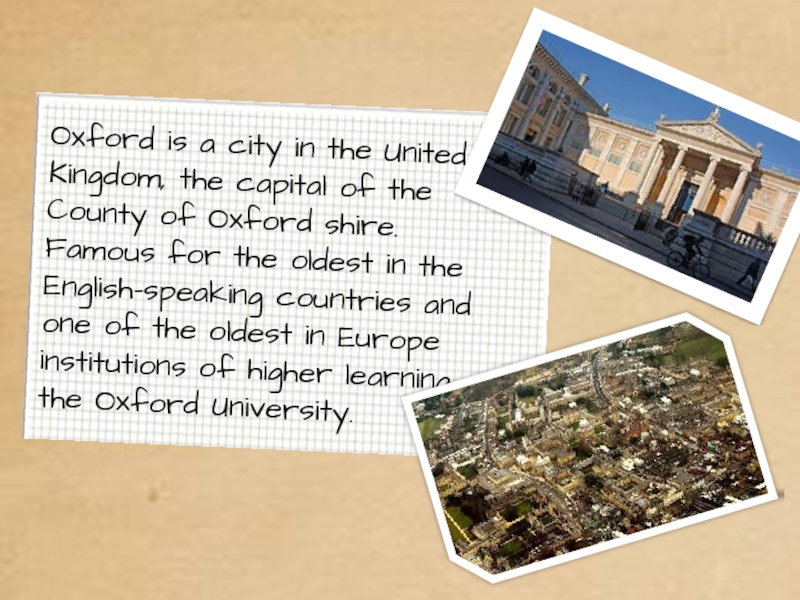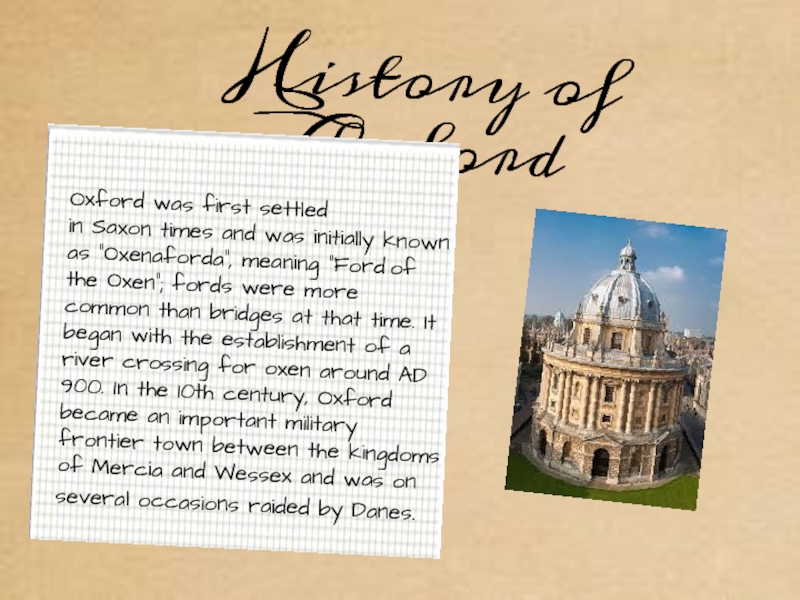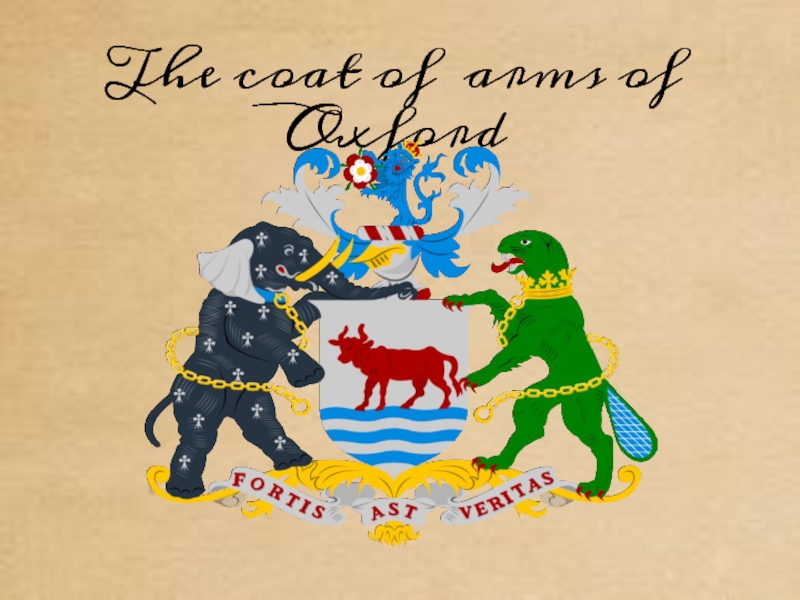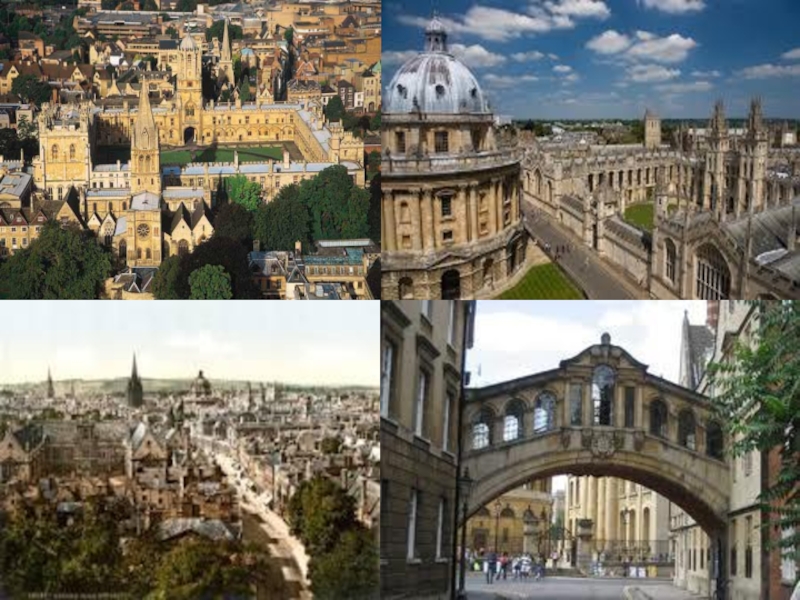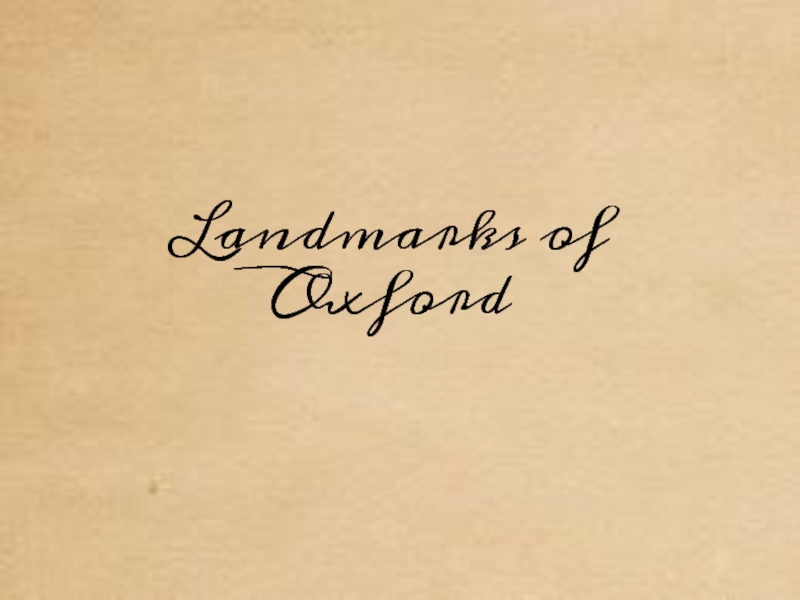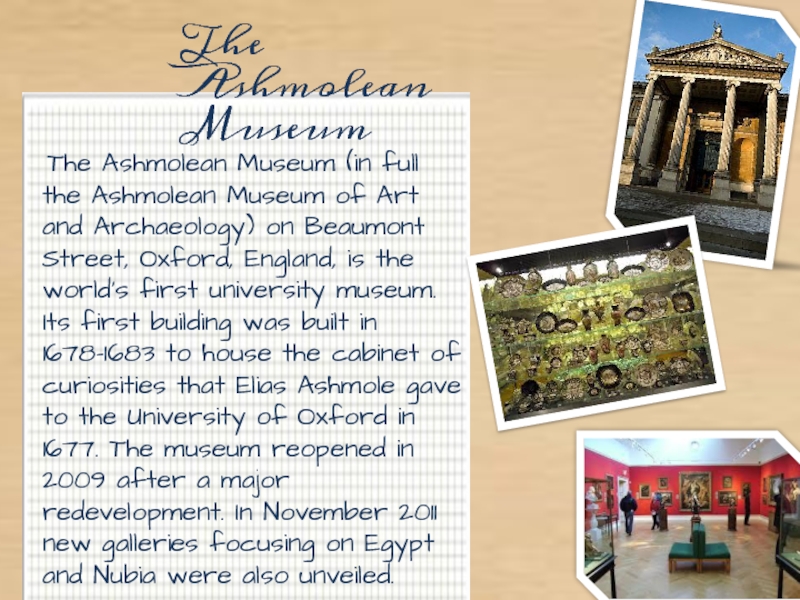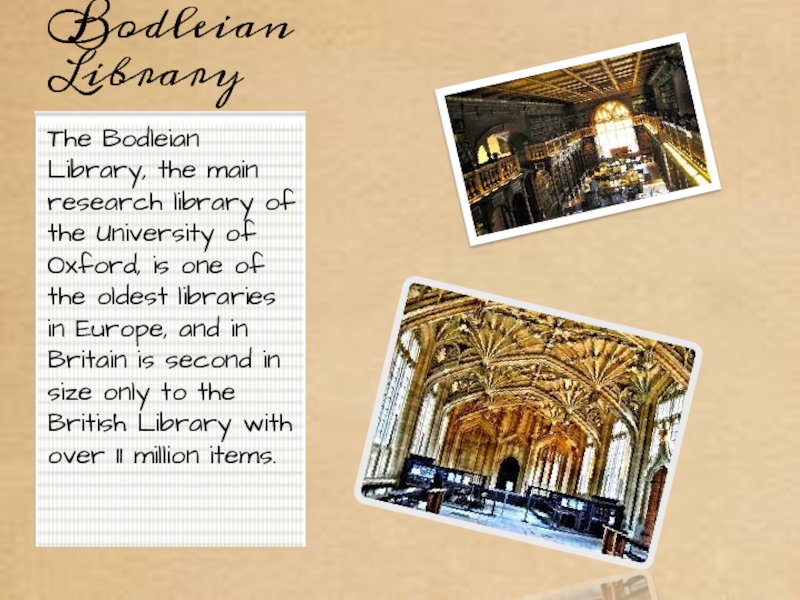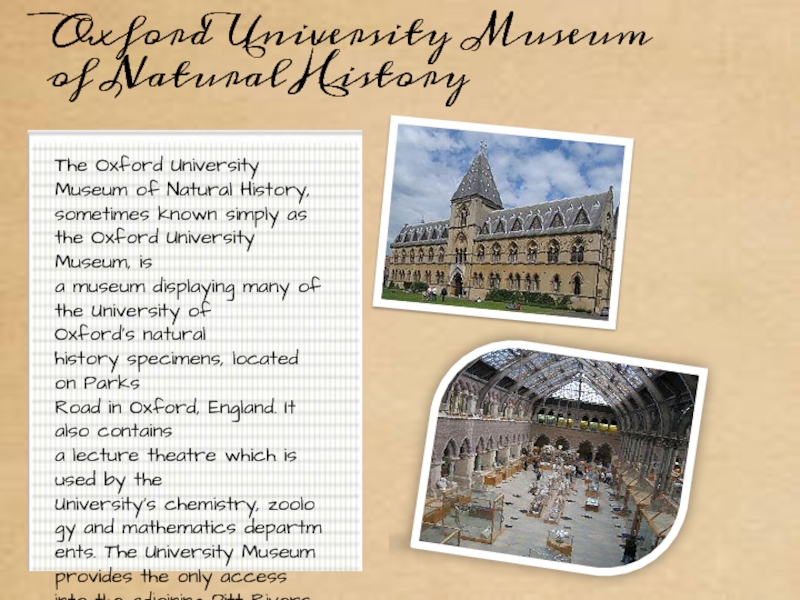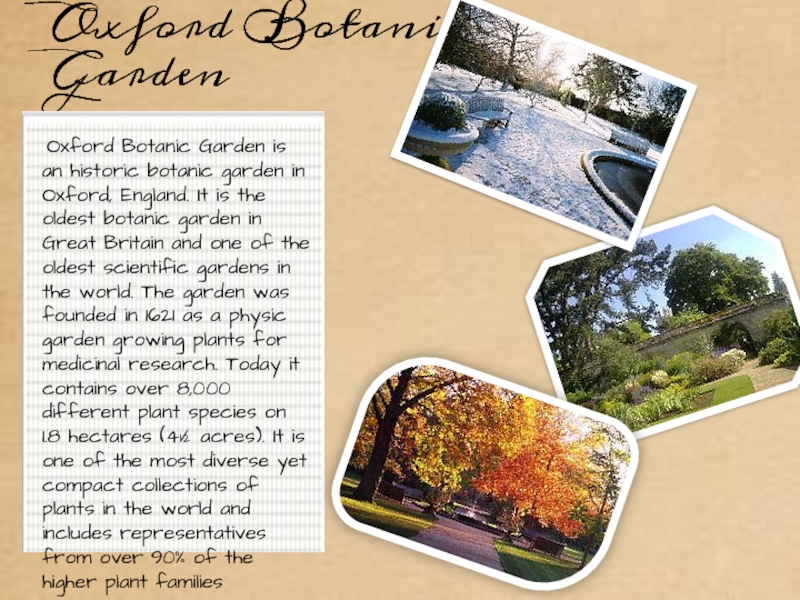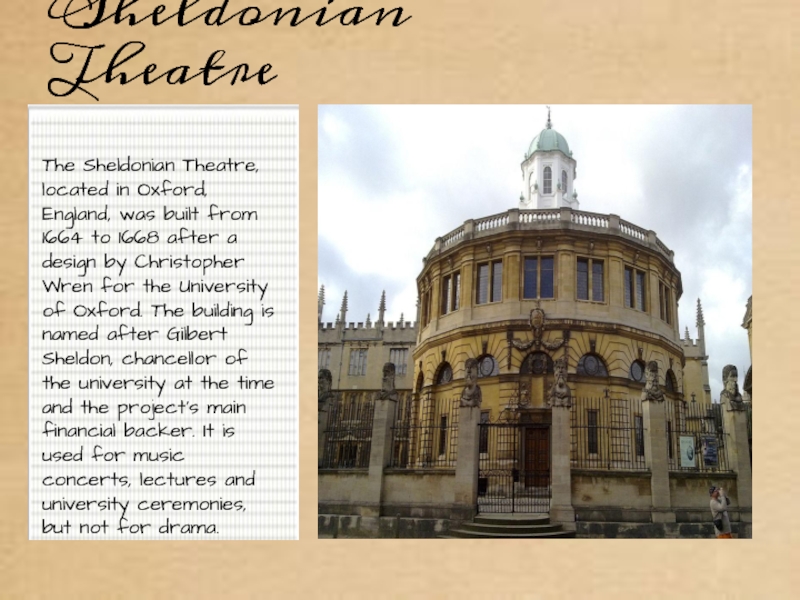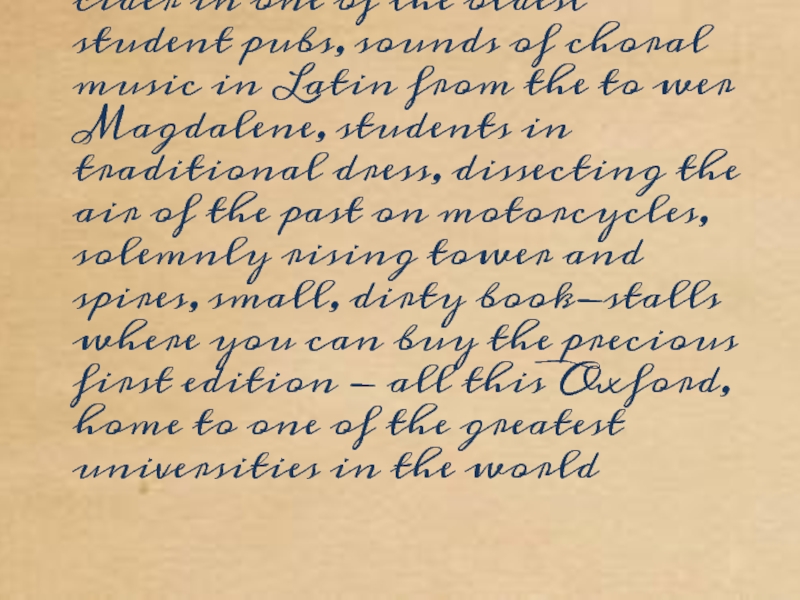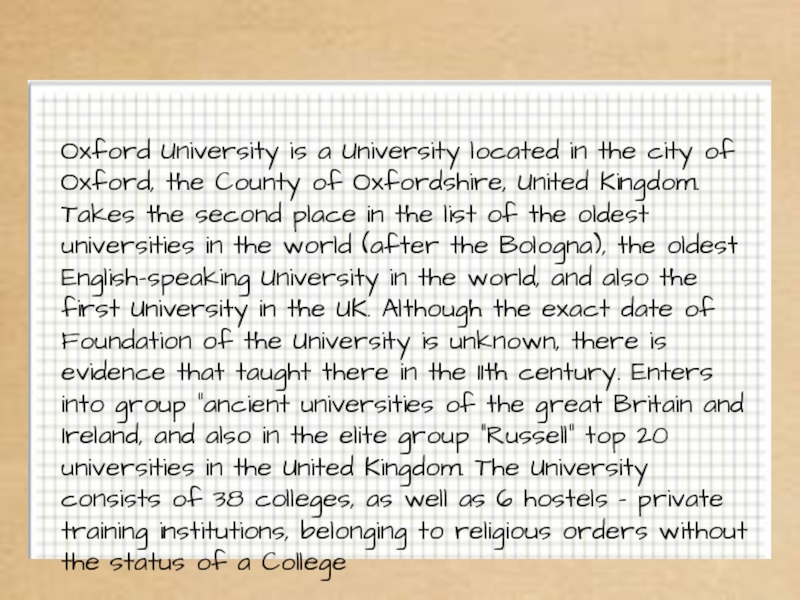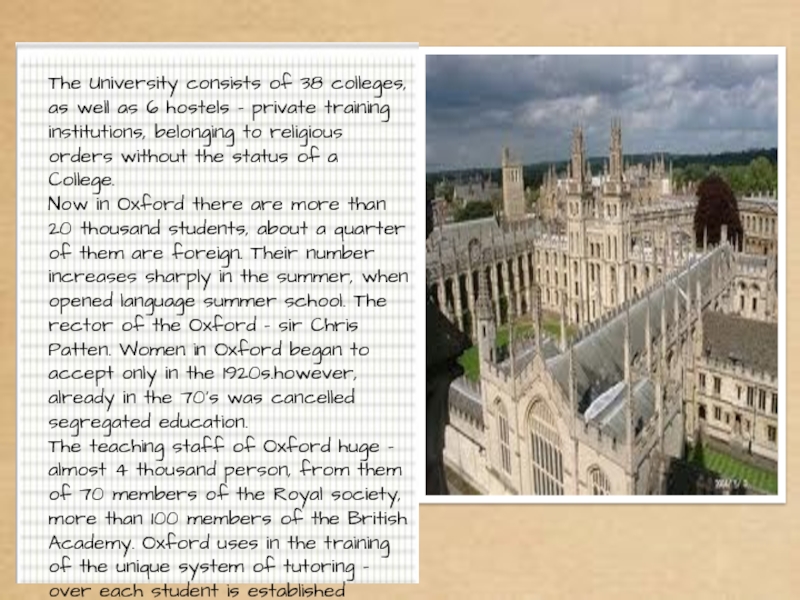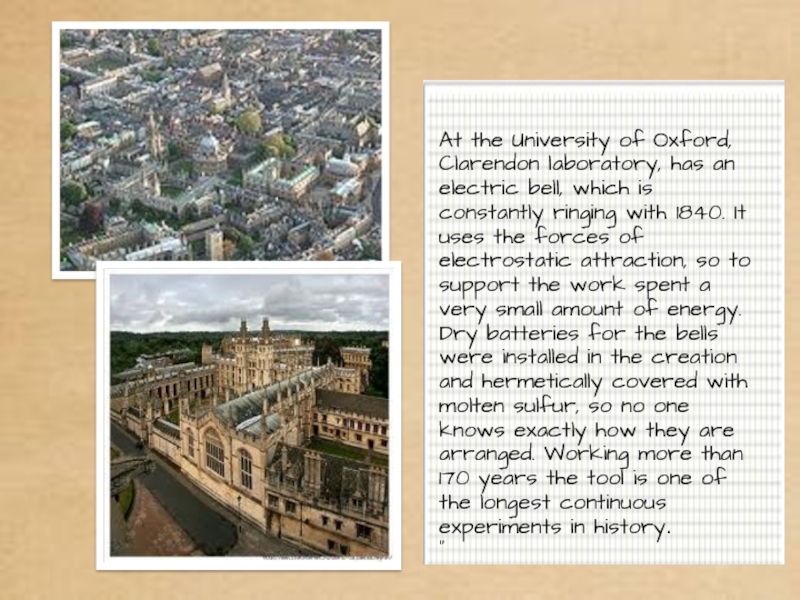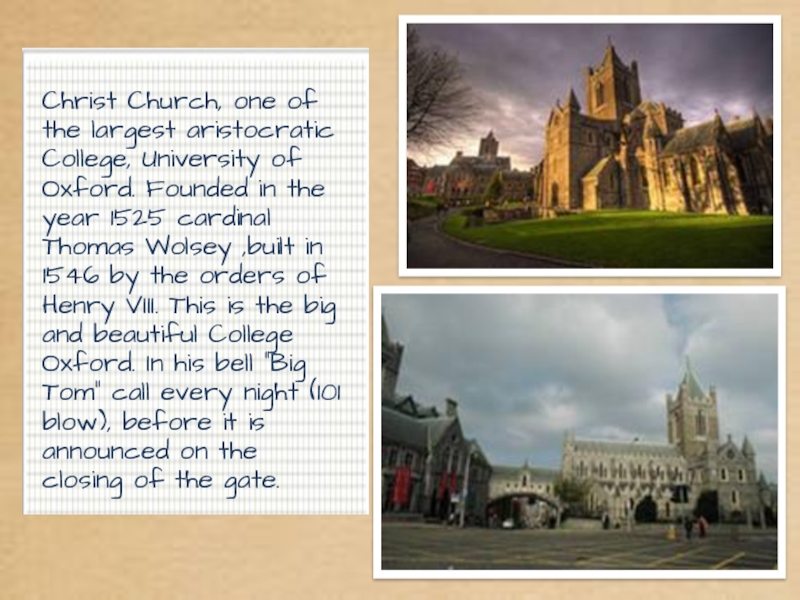Слайд 2Oxford is a city in the United Kingdom, the capital
of the County of Oxford shire. Famous for the oldest
in the English-speaking countries and one of the oldest in Europe institutions of higher learning - the Oxford University.
Слайд 3History of Oxford
Oxford was first settled in Saxon times and was initially known
as "Oxenaforda", meaning "Ford of the Oxen"; fords were more common than
bridges at that time. It began with the establishment of a river crossing for oxen around AD 900. In the 10th century, Oxford became an important military frontier town between the kingdoms of Mercia and Wessex and was on several occasions raided by Danes.
Слайд 7 The Ashmolean Museum (in full the Ashmolean Museum of
Art and Archaeology) on Beaumont Street, Oxford, England, is the
world's first university museum. Its first building was built in 1678–1683 to house the cabinet of curiosities that Elias Ashmole gave to the University of Oxford in 1677. The museum reopened in 2009 after a major redevelopment. In November 2011 new galleries focusing on Egypt and Nubia were also unveiled.
The Ashmolean Museum
Слайд 8Bodleian Library
The Bodleian Library, the main research library of the
University of Oxford, is one of the oldest libraries in
Europe, and in Britain is second in size only to the British Library with over 11 million items.
Слайд 9Oxford University Museum of Natural History
The Oxford University Museum of Natural
History, sometimes known simply as the Oxford University Museum, is a museum displaying
many of the University of Oxford's natural history specimens, located on Parks Road in Oxford, England. It also contains a lecture theatre which is used by the University's chemistry, zoology and mathematics departments. The University Museum provides the only access into the adjoining Pitt Rivers Museum.
Слайд 10Oxford Botanic Garden
Oxford Botanic Garden is an historic botanic
garden in Oxford, England. It is the oldest botanic garden
in Great Britain and one of the oldest scientific gardens in the world. The garden was founded in 1621 as a physic garden growing plants for medicinal research. Today it contains over 8,000 different plant species on 1.8 hectares (4½ acres). It is one of the most diverse yet compact collections of plants in the world and includes representatives from over 90% of the higher plant families
Слайд 11Sheldonian Theatre
The Sheldonian Theatre, located in Oxford, England, was built from 1664
to 1668 after a design by Christopher Wren for the University of Oxford.
The building is named after Gilbert Sheldon, chancellor of the university at the time and the project's main financial backer. It is used for music concerts, lectures and university ceremonies, but not for drama.
Слайд 12Walk the long winding street High, one of the most
amazing streets of England, a mug of cider in one
of the oldest student pubs, sounds of choral music in Latin from the to wer Magdalene, students in traditional dress, dissecting the air of the past on motorcycles, solemnly rising tower and spires, small, dirty book-stalls where you can buy the precious first edition - all this Oxford, home to one of the greatest universities in the world
Слайд 14Oxford University is a University located in the city of
Oxford, the County of Oxfordshire, United Kingdom. Takes the second
place in the list of the oldest universities in the world (after the Bologna), the oldest English-speaking University in the world, and also the first University in the UK. Although the exact date of Foundation of the University is unknown, there is evidence that taught there in the 11th century. Enters into group "ancient universities of the great Britain and Ireland, and also in the elite group "Russell" top 20 universities in the United Kingdom. The University consists of 38 colleges, as well as 6 hostels - private training institutions, belonging to religious orders without the status of a College
Слайд 15The University consists of 38 colleges, as well as 6
hostels - private training institutions, belonging to religious orders without
the status of a College.
Now in Oxford there are more than 20 thousand students, about a quarter of them are foreign. Their number increases sharply in the summer, when opened language summer school. The rector of the Oxford - sir Chris Patten. Women in Oxford began to accept only in the 1920s.however, already in the 70's was cancelled segregated education.
The teaching staff of Oxford huge - almost 4 thousand person, from them of 70 members of the Royal society, more than 100 members of the British Academy. Oxford uses in the training of the unique system of tutoring - over each student is established personal care specialist in the chosen specialty.
Слайд 16At the University of Oxford, Clarendon laboratory, has an electric
bell, which is constantly ringing with 1840. It uses the
forces of electrostatic attraction, so to support the work spent a very small amount of energy. Dry batteries for the bells were installed in the creation and hermetically covered with molten sulfur, so no one knows exactly how they are arranged. Working more than 170 years the tool is one of the longest continuous experiments in history.
"
Слайд 17
Christ Church, one of the largest aristocratic College, University of
Oxford. Founded in the year 1525 cardinal Thomas Wolsey ,built
in 1546 by the orders of Henry VIII. This is the big and beautiful College Oxford. In his bell "Big Tom" call every night (101 blow), before it is announced on the closing of the gate.

